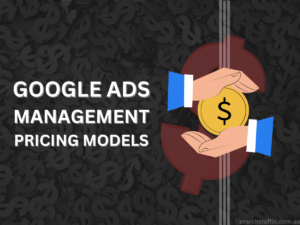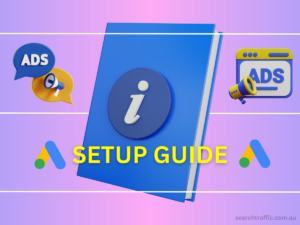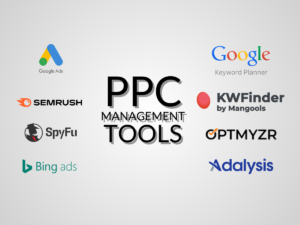Are you tired of constantly cold calling or worrying about where the next lead will come from? As a busy business owner, lead generation can be a major pain point, but the good news is that there is a solution.
With Search Engine Marketing (SEM) using Google Ads, you can proactively reach potential customers who are actively searching for products or services like yours.
By utilizing SEM, you no longer have to rely on traditional cold calling methods or worry about where your next lead will come from. Instead, you can focus on growing your business and converting high-quality leads generated through your ads.
In this guide, we’ll walk you through the process of using SEM to generate leads and take your business to the next level.
What Is SEM?
SEM stands for Search Engine Marketing, which is a digital marketing strategy that involves promoting your website and business through search engine advertising. It encompasses various tactics, including pay-per-click (PPC) advertising, search engine optimization (SEO), and display advertising.
The most popular platform for SEM is Google Ads, which allows you to create ads that appear at the top of search engine results pages (SERPs) when users search for keywords related to your business.
Why Use SEM For Lead Generation?
SEM is a powerful tool for lead generation because it allows you to target specific keywords and demographics that are most likely to be interested in your products or services.
With SEM, you can track the success of your campaigns and adjust them accordingly to ensure you’re getting the most value for your investment.
Here's a step-by-step guide to using SEM for lead generation:
1. Define Your Goals And Target Audience
Before you start creating ads, it’s important to define your goals for lead generation and your target audience.
Here’s are 3 things to jog your mind for this activity:
- Who are you trying to reach?
- What keywords do they search for?
- What are their pain points?
Once you have a clear understanding of your target audience, you can create ads that are tailored to their needs and interests.
2. Choose Your Keywords
Keywords are the foundation of SEM, as they’re what users type into search engines when they’re looking for products or services like yours.
Use keyword research tools like Google Keyword Planner to find the most relevant and popular keywords for your business. Be sure to choose keywords that are specific to your business and have a high search volume.
3. Create Compelling Ads
Your ads need to stand out in a crowded SERP, so it’s important to create compelling ad copy that grabs users’ attention. Use attention-grabbing headlines, persuasive language, and a clear call-to-action.
Be sure to include your keywords in your ad copy to ensure it’s relevant to users’ search queries.
4. Set Your Budget And Bidding Strategy
With Google Ads, you can set a daily budget for your campaigns and choose a bidding strategy to determine how much you’re willing to pay for each click on your ads.
There are various bidding strategies to choose from, including
- cost-per-click (CPC) bidding
- cost-per-impression (CPM) bidding
- target cost-per-action (CPA) bidding
We usually recommend CPA bidding – this means you know exactly how much you pay per lead.
5. Monitor Your Campaigns And Make Adjustments
Once your campaigns are up and running, it’s important to monitor their performance and make adjustments as needed. Use the data provided by Google Ads to track your ad spend, clicks, and conversions. Use this data to adjust your bidding strategy, keywords, and ad copy to optimize your campaigns and maximize your ROI.
Conclusion
SEM is a powerful tool for lead generation that can help you reach a larger audience and drive more traffic to your website.
By using Google Ads and following the steps outlined in this guide, you can create effective ad campaigns that generate high-quality leads for your business.
Remember to
- define your goals and target audience
- choose relevant keywords
- create compelling ads
- set your budget and bidding strategy
- monitor your campaigns
The above will ensure they’re delivering the results you need. With a little effort and investment, you can use SEM to take your business to the next level.






